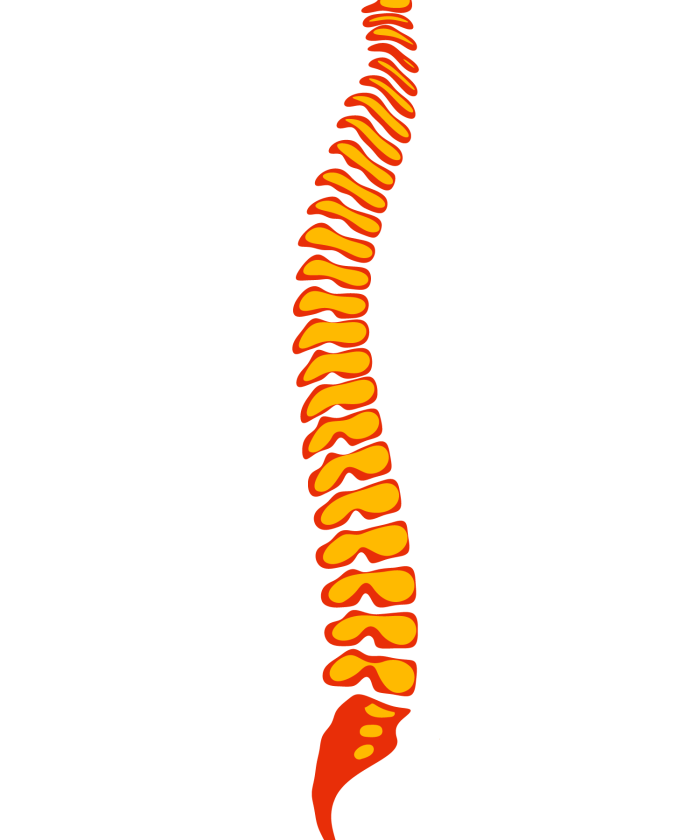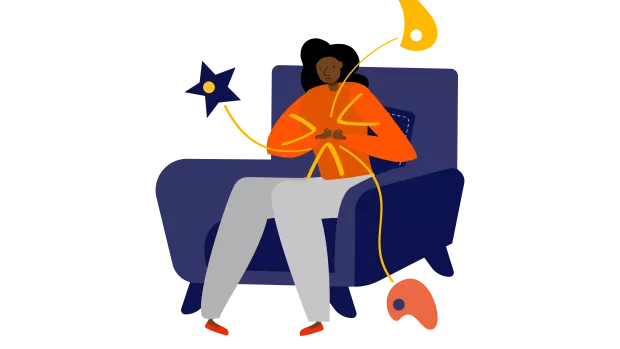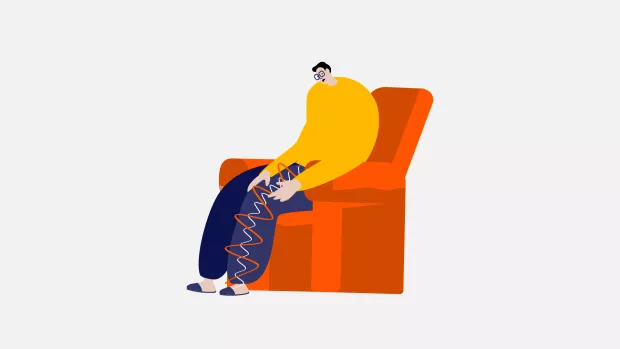
Lhermitte's sign
Lhermitte's sign (also known as Lhermitte's phenomenon) is a symptom that’s quite common in people with MS. It’s one of the types of pain or unusual sensations that could come and go.
What is Lhermitte's sign?
Lhermitte’s sign (pronounced "lair-meets") is a sudden brief pain or electrical buzzing sensation. It runs down your neck into your spine and might then spread into your arms or legs.
It can be triggered when you bend your neck forward, or after a cough or sneeze. Lhermitte’s sign is a sharp but short-lived pain (usually lasting a few seconds). You might hear it described as an acute or ‘paroxysmal’ pain.
What causes Lhermitte's sign?
In MS, Lhermitte’s sign mostly happens because there’s an area of damage (a lesion) on the nerve in your spinal cord. This will be in the part of your spine that’s close to the base of your neck.
There’s a fatty covering called 'myelin' around the nerves in your spinal cord and brain. Its job is to protect the nerve and help messages from the brain pass along it. But with Lhermitte’s, MS has damaged this myelin.
The result is that when you move your head, especially forward towards your chest, the movement makes the damaged nerve fire off signals to your brain. You feel these signals as pain or an unusual buzzing or shock-like sensation, even though nothing is actually causing harm to the nerve.
Lhermitte’s sign can also happen with some other conditions. So if this feeling happens to someone who’s not already been told they have MS, they should see a doctor to find out what’s causing it.
What can trigger Lhermitte's sign?
Lhermitte’s sign can be triggered by certain movements of the neck, such as bending your head forward towards to your chest. Coughing, sneezing or yawning can also trigger the sensation.
Other triggers of Lhermitte’s sign can include stress, fatigue and heat.
How common is Lhermitte's sign in MS?
Studies into how common Lhermitte’s sign is have come up with very different figures, from around 16% to a 33% or even higher. A 2015 study of nearly 700 people with MS found no link with how old people were, their sex, how long they’d had MS or how serious their disability was.
How is Lhermitte's sign treated?
For some people, over time Lhermitte’s sign will go away for good, but for others it comes back. There are things which can help lower the chance of feeling Lhermitte’s sign, including:
- Avoiding movements that trigger the sensation. Wearing a soft neck brace can help you avoid it
- Making sure you have a good posture – a neuro-physiotherapist can give advice about this
- Reducing stress through stretching, relaxation exercises, meditation and mindfulness techniques. Some exercises might trigger the problem so this is also something a physiotherapist can give advice about
- Electrical stimulation devices, such as TENS (transcutaneous electrical nerve stimulation)
- The sudden sensation of Lhermitte’s sign is over so quickly it usually won’t need treating with medication. There’s no specific drug for Lhermitte’s, but some drugs used for seizures or depression might be useful if the pain happens often or affects your quality of life. These include amitriptyline (Triptafen), duloxetine (Cymbalta), gabapentin (Neurontin) or pregabalin (Lyrica)
A neuro-physiotherapist can give advice. Ask your GP, MS nurse or neurologist about getting a referral.


